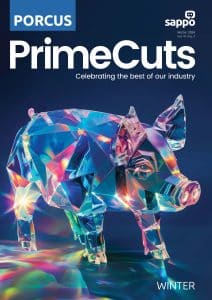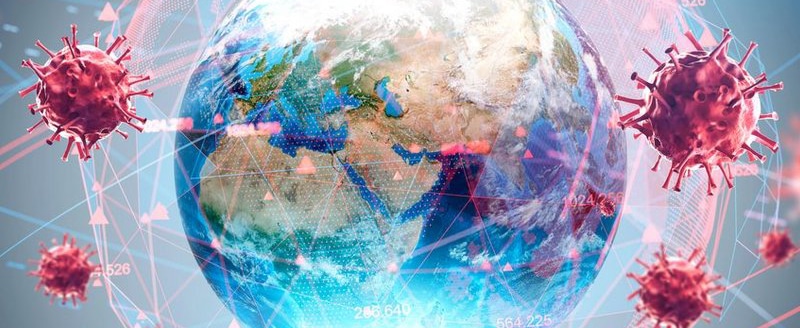Source: Zoetis media release, 2 March 2021, photo credit: Rural 21
If 2020 taught us anything, it’s that the health of humans and animals are inescapably linked. This isn’t a new revelation, though. COVID-19 might be the most devastating disease to spread between animal and human populations, but it’s far from the first. SARS, MERS, Ebola, HIV, rabies, Salmonella, Avian influenza, H5N1, West Nile virus and Lyme disease are just a few of the better-known examples of zoonotic diseases, and the list continues to grow.
According to the World Health Organisation, 75% of emerging infectious diseases and 60% of communicable diseases are zoonotic, which is why embracing a One Health policy is becoming increasingly important for humans and animals alike.
“One Health isn’t only important because of zoonotic diseases,” says Llewellyn Sinclair, Business Unit Manager: Companion Animals at animal health company, Zoetis South Africa.
“Coronavirus is shining a spotlight on infectious diseases, but the links between animal health and human health are much broader than this. Internationally, Zoetis has invested billions researching animal pharmaceuticals, antibiotics and vaccines because of all these linkages.”
“We have also partnered with the Bill and Melinda Gates foundation to research how food production can be improved in countries across the African continent. Labs have been set up to ensure that sustainable farming practices are followed, and that meat is processed in the correct way. As populations continue to grow and our need for sustainable and healthy food practices increase, this becomes ever more important,” says Sinclair.
Coronavirus and how we interact with animals
Consider how the Earth’s population is growing and changing, and how this impacts our environment, the animals who share our planet with us, and our relationship to both.
Firstly, as more and more people are born each year, we’re living closer together and consuming more natural resources. We’re also travelling at unprecedented rates (with the exclusion of 2020) and changing the world around us. This allows viruses – both human and animal – to move through populations across the globe at an unprecedented rate.
“Our interaction with animals is far more significant than viruses alone,” says Sinclair. “Throughout human history, we have turned to animals for companionship, education, food and industry. We have always lived and worked side by side with animals, which is why our health is so interconnected.”
“The result is that research and development in veterinary medicine can help inform and even accelerate innovation in human medicine and vice versa. Because of how closely we interact, animals can also sometimes serve as early warning signals of potential human outbreaks – if we’re paying attention. Tracking diseases in animals also helps to keep domestic and wild animals healthy, which in turn prevents illnesses and disease outbreaks in people,” says Sinclair.
The One Health approach to human, animal and environmental health
Earlier in 2020, the United Nations Environment Programme (UNEP) and the International Livestock Research Institute (ILRI) released a scientific assessment arguing that if we want to prevent the next pandemic, it is essential that countries across the globe integrate human, animal and environment health expertise and policy. This is the heart of the One Health approach, with the ultimate goal being to protect ourselves and the planet.
“A strategy is required to expand the perspective of public health beyond a single species to detect and manage emerging public health threats. It’s also important for different agencies and organisations, both in the public and private sectors, to work together to predict, prevent, and control zoonotic disease outbreaks, as well as investigate other threats that affect the environment, humans and animals,” says Sinclair.
For example, in 2018, the world’s worst listeriosis case hit South Africa as a result of contaminated processed meat. “Listeriosis isn’t an infectious disease, but it’s a perfect example of how food processes are linked to human health,” says Sinclair.
“The number of diseases that can be transmitted in poultry houses, for example, is deeply worrying without preventative measures in place, and this includes pharmaceuticals as well as better processes and the ability to trace food from source to table. There’s a world trend emerging doing just this, but we still need to focus more on the One Health concept.
“Traditionally, human pharmaceutical companies are less concerned with animal health than we believe they should be. There’s a strong need for the two sides of the healthcare system to be working together and talking about these various issues. We see this happening in virology because of the strong link to animals in viruses, but this is only one, highly specialised area. Perhaps with the current spotlight on this area, we can all take a page from their book.”
Every person on the planet can play a role
There are many steps that communities can take to implement One Health practices into their daily lives. For example, household and farmyard animals can often be the source of disease outbreaks in people. By ensuring that the animals you interact with stay healthy and by guaranteeing good hygiene for them, you can limit exposure.
Another critical step is to keep wildlife wild. By enjoying wild animals at a distance, you reduce the risk of illness and injury to wildlife, yourself and your pets.
Finally, professionals in many fields, particularly human healthcare, veterinary medicine and environmental health, should begin using a One Health approach.
“The more we recognise and respect the connection between human health, animal health, and the environment, the more successfully we can work together to achieve health practices that protect our entire planet,” says Sinclair.
The South African Pork Producers’ Organisation (SAPPO) coordinates industry interventions and collaboratively manages risks in the value chain to enable the sustainability and profitability of pork producers in South Africa.









